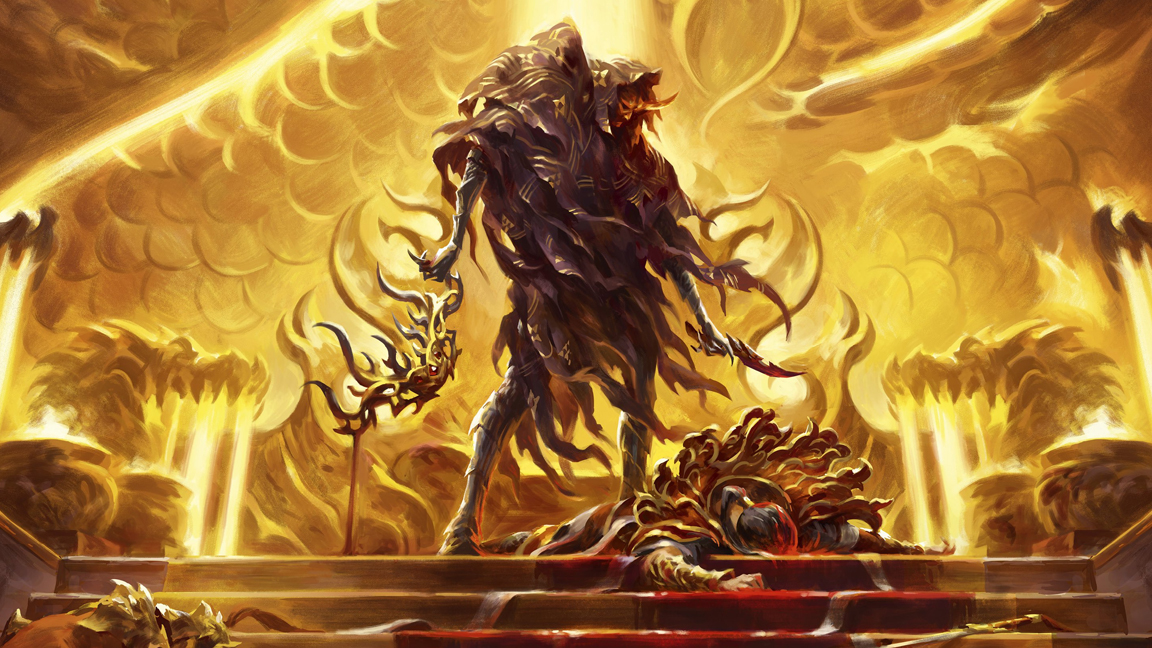Like many of you, when James White unveiled The Emperor at Pro Tour 2 in Lille, I was a little bit skeptical. Okay, a lot skeptical. My first impression was that he was a meme hero, revealed for lore purposes and not much more, inviting everyone to Volcor with promise of treasure and festivities. He was exciting, though: our first hero with a dual class! And sharing one of those classes with my favorite class in the game - Wizard - I knew I had to at least least give him some consideration, if only for a few casual games.
An Audience with the Emperor
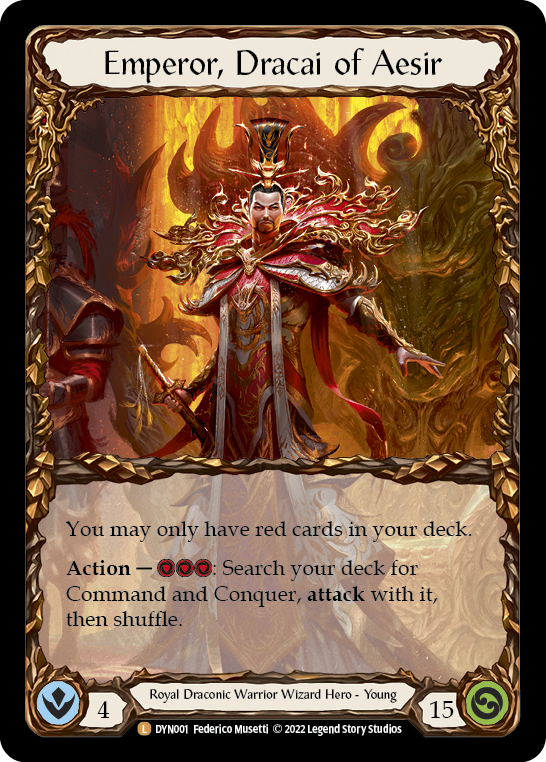
Emperor holds some prestigious pedigrees as a Royal Draconic Wizard Warrior. Quite the mouthful!
Emperor’s subtypes gain him access to some of the strongest equipment in the game. Storm Striders essentially lets any savvy Wizard interrupt their opponent's turn at instant speed, often dishing out high arcane damage when they've overextended to finish you off. Warriors have earned a reputation for their fridge of sturdy armor with high blocking value and the ability to pump weapon attacks. Being a Draconic hero means he also has access to the insane value of Flamescale Furnace, which rewards you with resources for every red card in your pitch zone.
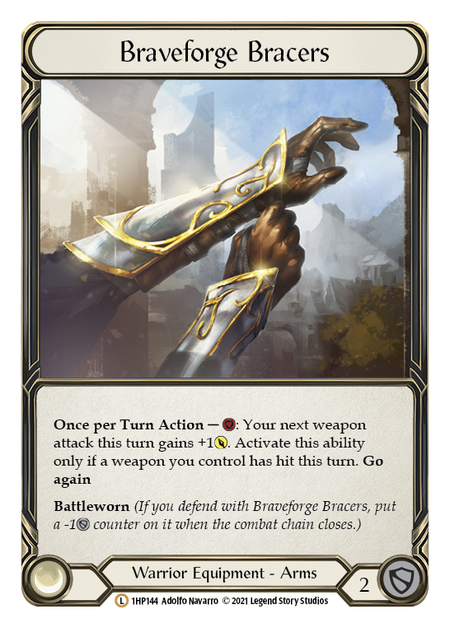
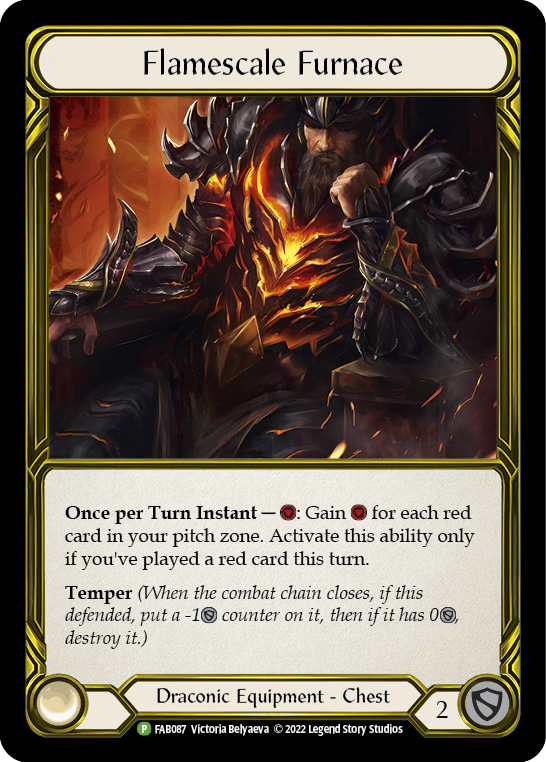
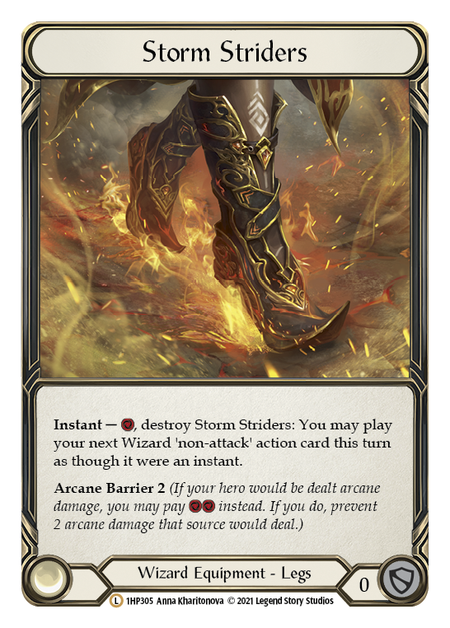
Emperor is uniquely restricted in deck building, only able to run red pitch cards. In the traditional card cycle, red pitch cards are the the strongest cards in the game, offering the highest damage output - but they sacrifice pitch value in the name of their optimization. That presents a challenge: balancing raw power against the ability to actually pay for that power.
Arguably, Emperor has access to the most equipment of any other hero in the game, as well as the largest card pool we’ve seen (with the exception of Bravo, Star of The Show) even if that card pool is limited to only the reds. With all these options, there must be configurations available that win us games.
Getting to Know Royalty
Let’s ask ourselves, what kind of hero is Emperor? It's important to identify the strategies a hero is predisposed toward as we work on sketching out a deck - and it's one I’ve been trying to answer with conviction, but Emperor won't be defined so easily. Is he an aggressive deck? Well, he can be. How about a midrange or tempo hero? Um, sure. He's a Wizard, can he play a combo style? An arcane burn style? All of the above.
Emperor can get real aggressive, dumping 4- and 5-card hands that stack damage up into the high teens rather efficiently. Emperor can tempo you out, blocking extremely well and still presenting 7 damage from 2-card hands quite easily. Emperor can be built to end games out of nowhere with 10-damage combo kills thanks to a bit of trickery from Furnace and Striders. Like Iyslander, he can present damage across multiple axes; like Warriors, he can present no-win scenarios with difficult-to-block attacks.
Emperor can’t be pigeonholed. If you fancy a particular playstyle and can dream it up in the confines of an all-red deck, chances are Emperor can probably make it work with a bit of creativity.
One of the Emperors biggest strengths is a classic one, pioneered by Runeblades and newer Iyslander archetypes: access to both physical and arcane damage. When you present Emperor to your opponent, they are faced with difficult decisions even before the game starts. Is this gong to be an Arcane build? Is this going to be a build more focused on efficient weapon swings? Is this going to be more of an attack action, go wide build? Maybe a hybrid of them all? It makes equipment choices difficult for your opponents.
Heroes with versatile archetypes have a distinct advantage. We’re seeing that executed to great effect with the likes of the multiple avenues Dash can be built and how Michael Hamilton shocked US Nationals this year with his 'Bullander' list. When your opponent doesn’t know what to prepare for, you start the game with an insane edge. So let’s dive into some of my favorite ways to build Emperor and shake things up!
Building an Empire
Let’s start with that massive suite of weapons I mentioned before. Between sabers and swords, axes and daggers, and all the wizard staves, the options are almost silly. But different tactics require different weapons. Jubeel Spellbane offers a nice 3 attack for one pitch, and if it’s not blocked out can generate a Spellbane Aegis token; as we struggle to use arcane barrier efficiently with red pitch, that token can make a big difference into arcane matchups. For the more Warrior-centric builds, I’ve grown attached to a new bit of tech in the Cintari Saber / Quicksilver Dagger combo. It might seem resource-intensive to give the Saber go again, attack with Dagger, and follow that up with another attack - but as we'll discuss shortly, Furnace can make a big difference here.
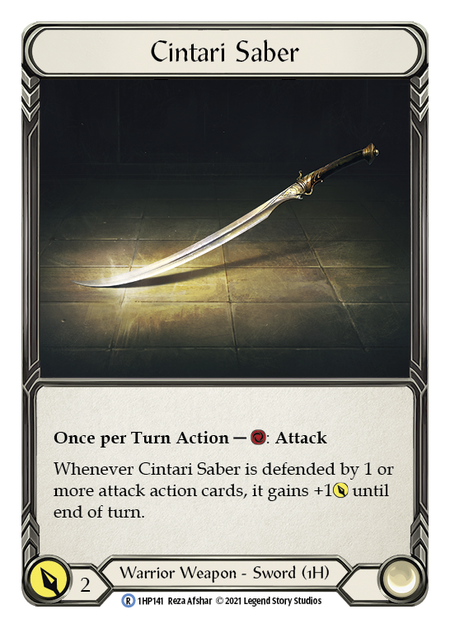
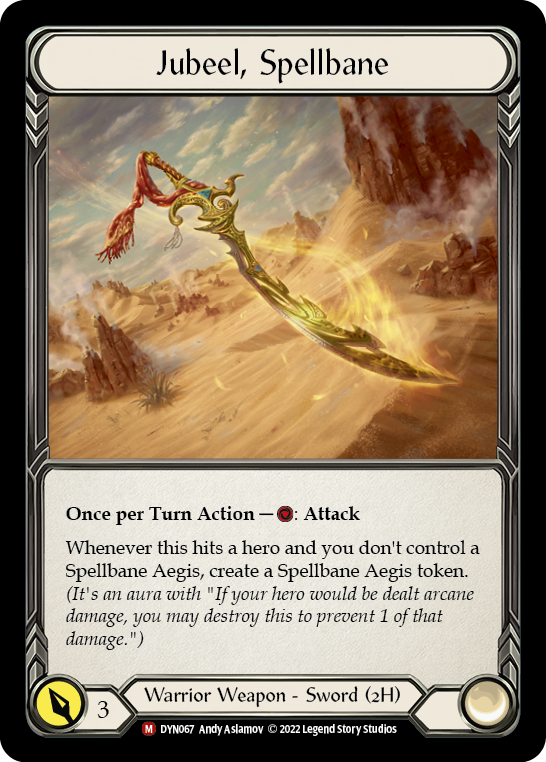
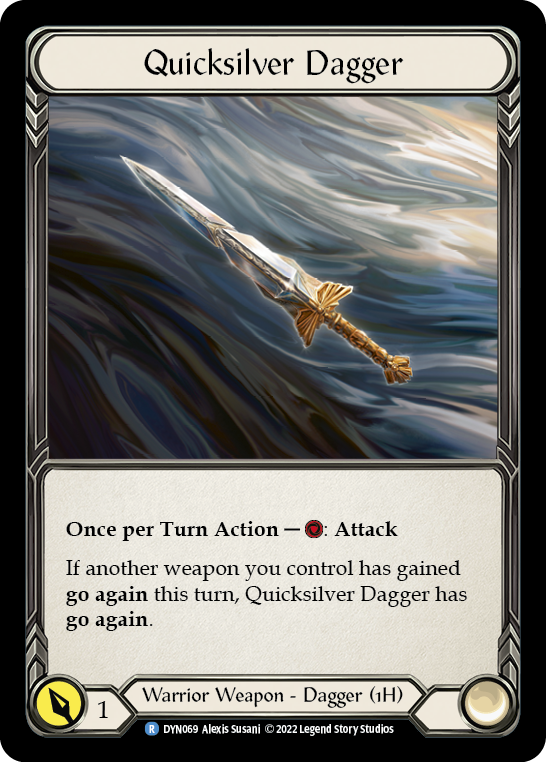
When we're focusing on arcane damage ourselves, Crucible of Aetherweave can really tack on the damage and add up. Emperor can also use my favorite weapon in the game, the mighty Waning Moon! My love for the Moon started in Uprising limited, learning how powerful 2 or 3 arcane damage can be at instant speed - and in the right Emperor build it’s no less effective.
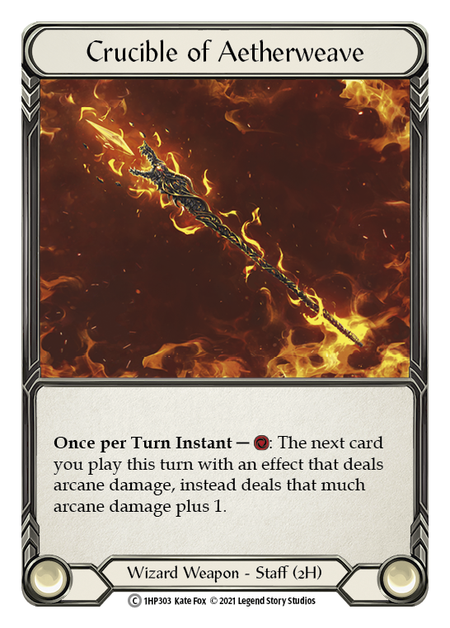

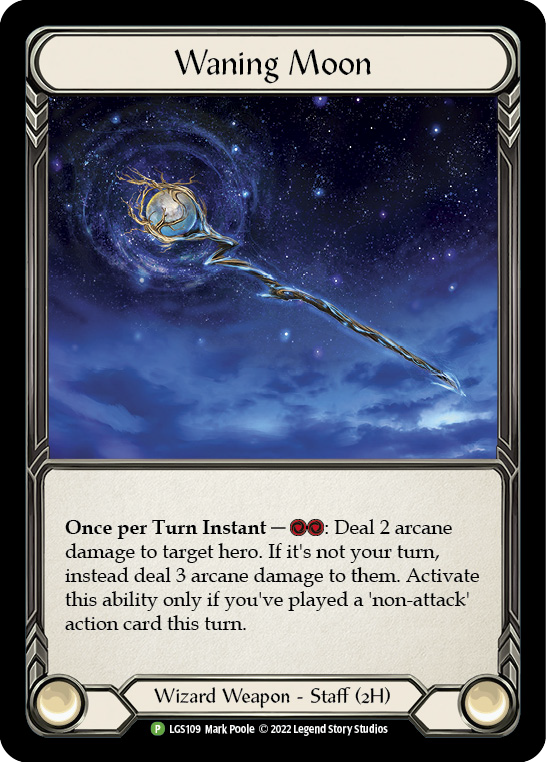
I said I'd get to Flamescale Furnace, and here it is: this equipment offsets the inefficient pitch of red cards, and lets us lean into combos that cost a lot more resources than it feels we should have access to. So long as you've played a red card first, you can turn your expenses into assets and push deeper into your turn than an opponent expects.
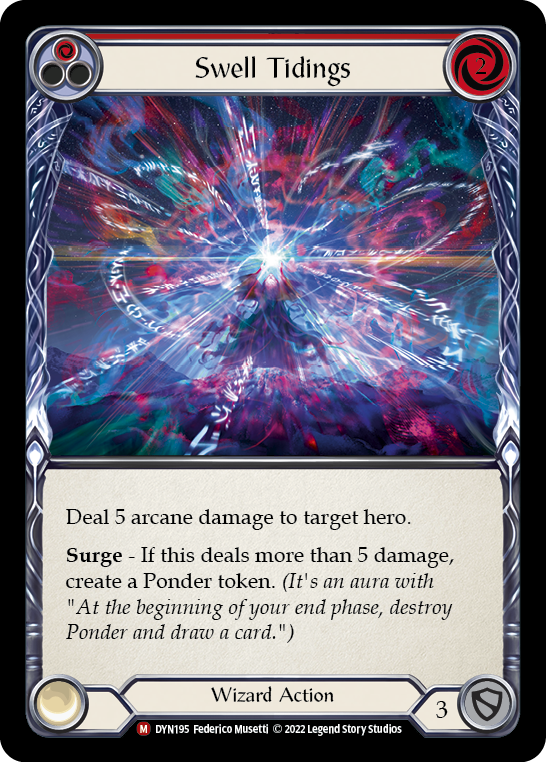
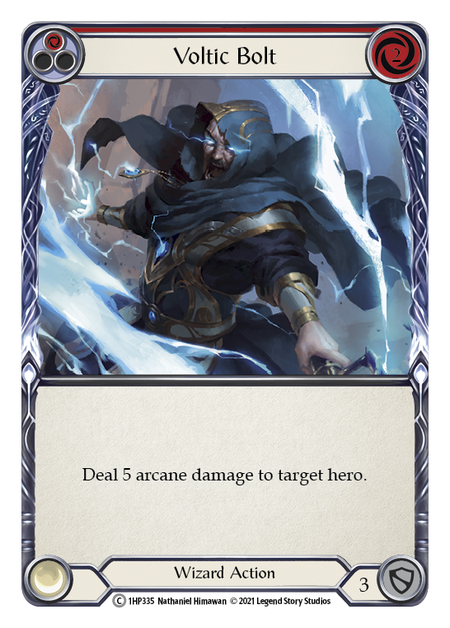
Next I went straight to Wizard school. Wizard is my favorite class in Flesh and Blood by a mile. Traditionally, most red Wizard spells are slightly below rate compared to other class cards and attacks. I suppose this is because arcane damage is a bit trickier to block and prevent, needing the right equipment or other effects to do so. That said, I still love me a Swell Tidings or Voltic Bolt! While 5 damage for 2 resources might be below rate, a well-timed Flamescale Furnace rebate can effectively make it 5 for 1 or even 0! It’s crazy value to end a chain of a couple powerful attacks with a discounted Swell Tidings.

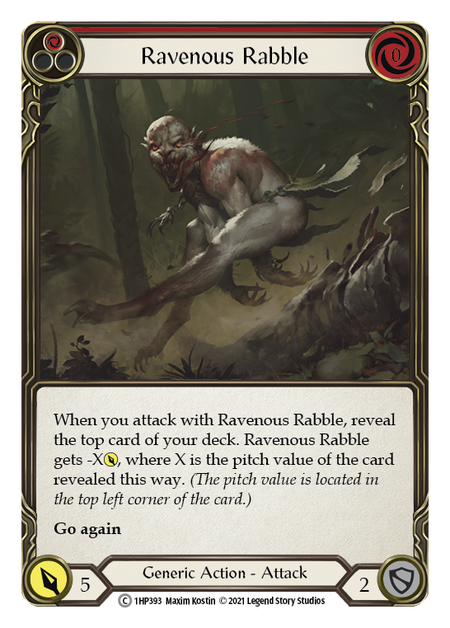

Red generic cards offer unparalleled value if you know where to look. 0-for-4 attack actions and defense reaction, cheap life gain, weapon buffs, go wide, go again attacks, Enlightened Strike, and my favorite card of all, Ravenous Rabble - an unconditional 4 with go again in this deck. Scar for a Scar is almost always online due to Emperor starting at 15 health. Sink Below, Snatch, and Coax a Commotion all offer additional 0-for-4 value that really push the limits of what’s possible with a hand of any size.
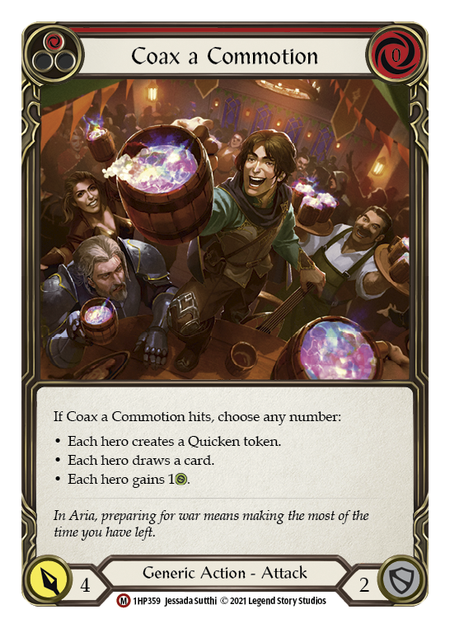
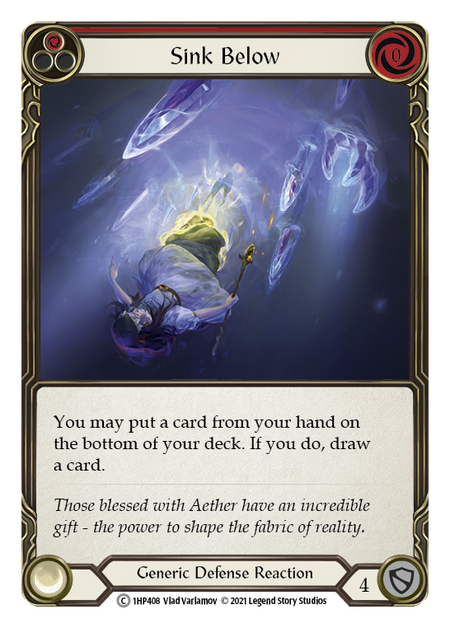

These generic offerings are all the building blocks of Emperor, no matter the archetype you favor. But in my testing, one card stood out to me as so undervalued it’s crazy: Life for a Life. 1-for-4 go again with the upside of gaining you a life back. And I’ve found that anytime you need to pitch a card to pay for a card, that resource comes back two-fold with some smart Furnace manipulation.
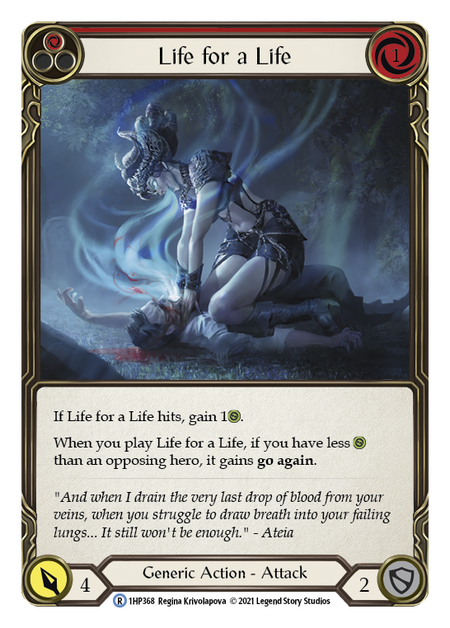
Tempo Hybrid
Honing in on highly efficient attacks with go again, smart resource manipulation, and ending the chain with an arcane spell has proven to be so effective and difficult to block, it’s led to victories in matchups where Emperor wouldn’t seem favored. Starting at a health deficit means cards like Scar for a Scar and Life for a Life can provide the backbone of go-wide 4-damage attacks and are almost always turned on. Ravenous Rabble is an all star in this deck, and Coax a Commotion and Snatch can provide beneficial on-hits that are usually a 'must block' for the opponent.
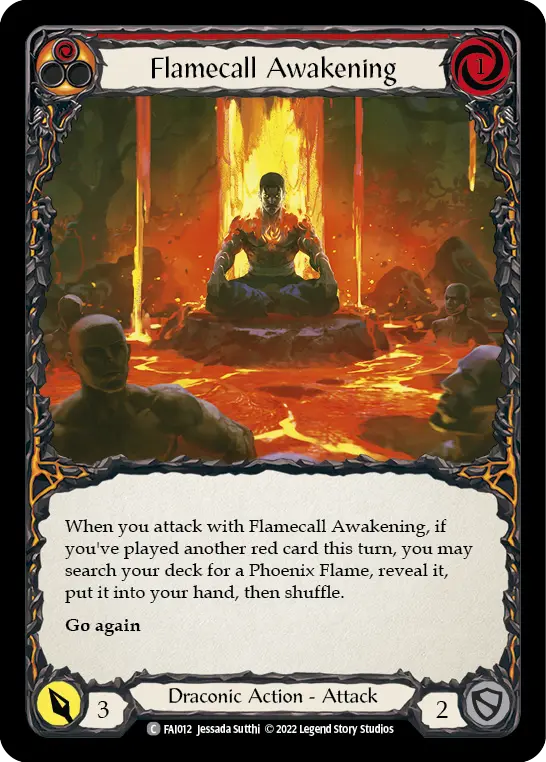
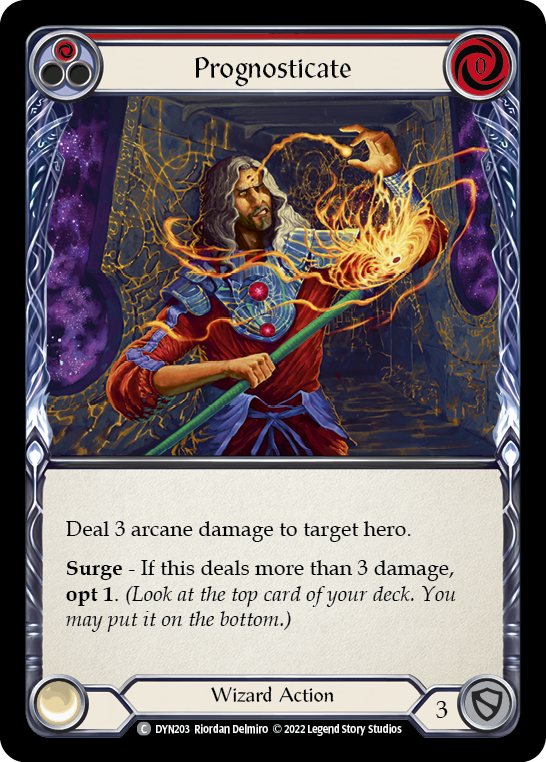
If you can satisfy its condition, Flamecall Awakening can fetch you a Phoenix Flame that can be pitched into Flamescale Furnace for much-needed resources, or an additional ping of 1 damage that might be just enough. A high density of efficient red arcane spells like Prognosticate, Scalding Rain, and Swell Tidings mean you’re attacking from two different angles so consistently that your opponent is always faced with difficult blocking decisions. And as any Wizard experience will teach you, Emperor can sneak through an Emeritus Scolding on the opponent's turn for a game-ending 6 damage at instant speed. This deck can do it all.
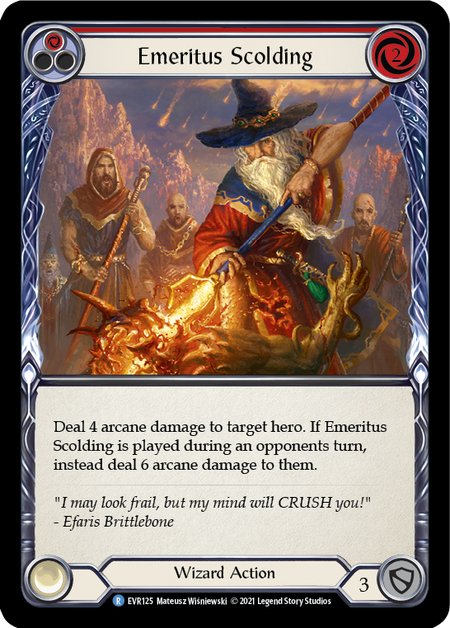
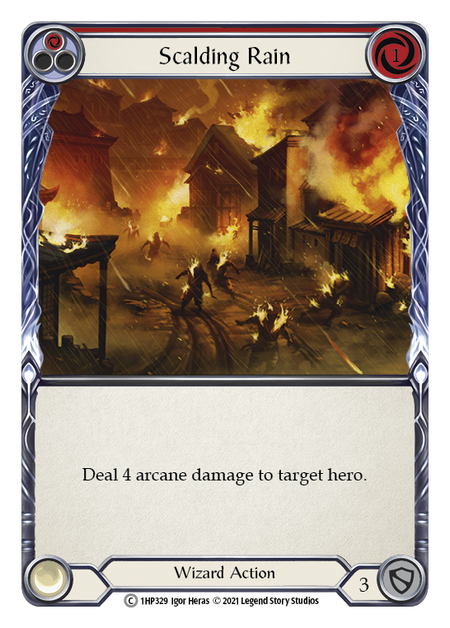
Weapon Value
My second iteration of Emperor revolves around his Warrior class tag. This build is all about midrange value with weapon swings. Cintari Saber offers 2 damage for 1 resource, and here we've paired it with Quicksilver Dagger. On the surface, this might not seem too efficient in an all-red build; spending 2 resources for 3 damage, split between 2 weapons, with the tacked-on cost of giving the first weapon go again, is costly. But things get interesting when you pair this with cards like Blade Runner, Hit and Run, Precision Press, and Spoils of War. Even setting up with a Driving Blade can create a 3-attack chain that ends with a tutored Command and Conquer - a borderline cracked play.
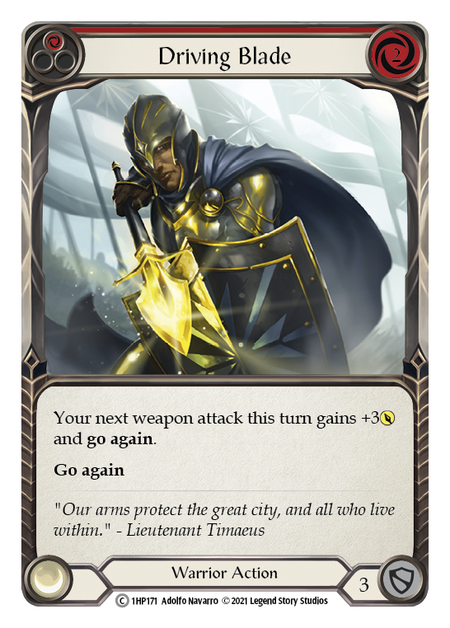
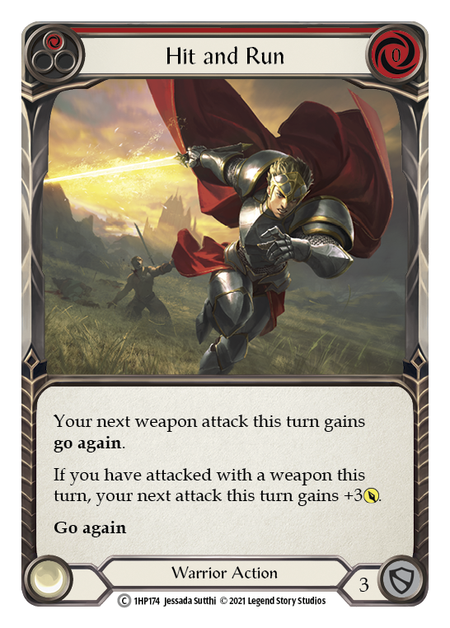
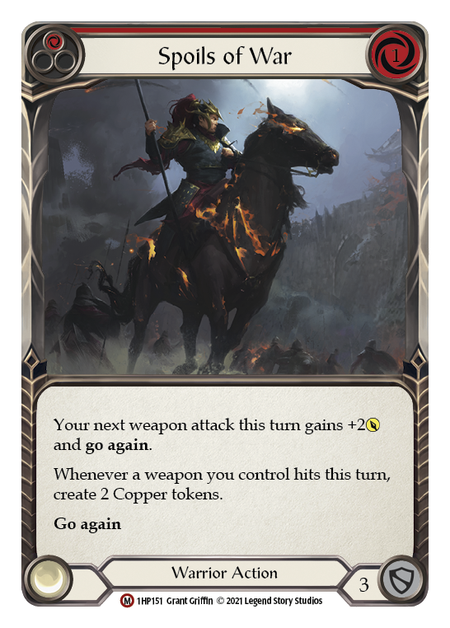
Emperor for Everyone
Speaking of Command and Conquer, let's address the elephant in the throne room: piloting the Emperor at full strength is a costly prospect. A fully optimized deck requires a whopping 7 Legendaries! Not to mention having a hero ability that tutors up the most expensive generic majestic card in the game. My main list can cost a staggering $1000.
I’m fully aware this can price the majority of players out of ever playing Emperor. BUT! I’ve put together a budget list that anyone wanting to explore the mighty Emperor can start with. It isn’t poised to take down a Skirmish, but it's super fun to play and quite viable at the local Armories. At the time of writing, rainbow foil Emperor sits around the $10-$15 range - so that's at least 1 Legendary that's totally affordable!
While I hope this article highlighted my thoughts that Flamescle Furnace might be the most impactful piece of equipment Emperor has access to, I understand it’s not in everyone's budget, so let’s talk alternatives. (This would be my first upgrade line, if you decide to move up from a budget build.)
Blossom of Spring offers a one-time free resource, and for quicker games, one resource can mean just enough juice to power up turn. Deep Blue can provide 3 resources for the price of one red card, enabling huge plays with those more hungry hands. Vest of the First Fist can provide a much-needed 2 free resources, with the caveat of an attack hitting this turn. Blood Drop Brocade can net you one at instant speed if you’ve taken or dealt any damage this turn.
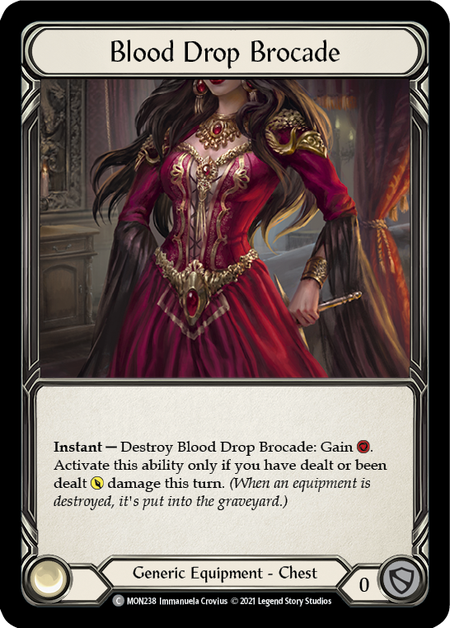
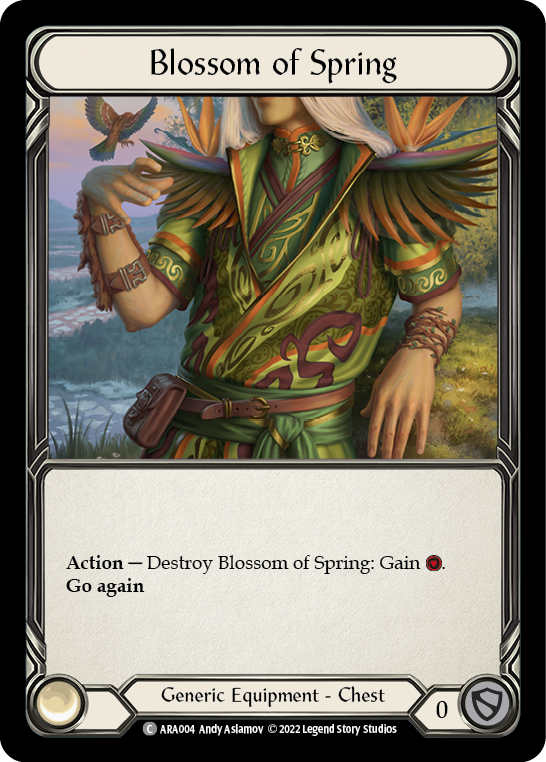
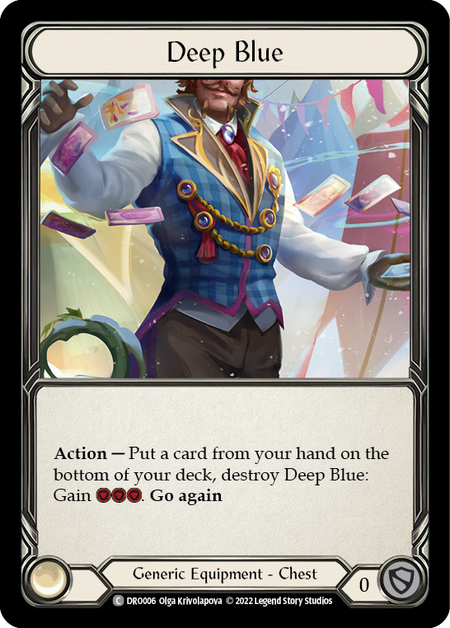
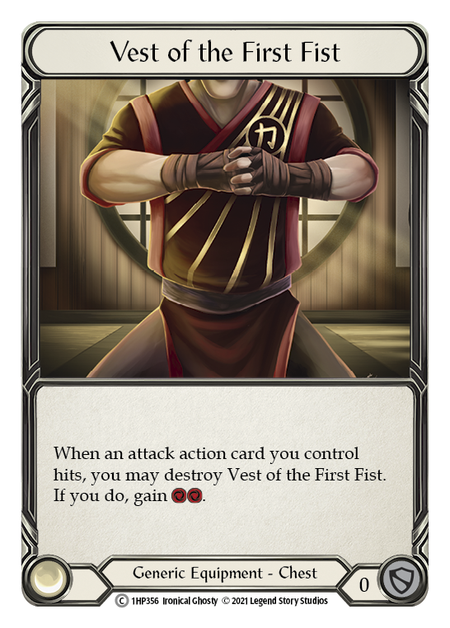
Theres no denying the sheer power of Storm Striders! I can’t imagine life without my boots. But there was indeed a dark time in the not-too-distant past where I didn’t have access to them in the Blitz format. As sad as I was, it forced me to look elsewhere for alternatives.
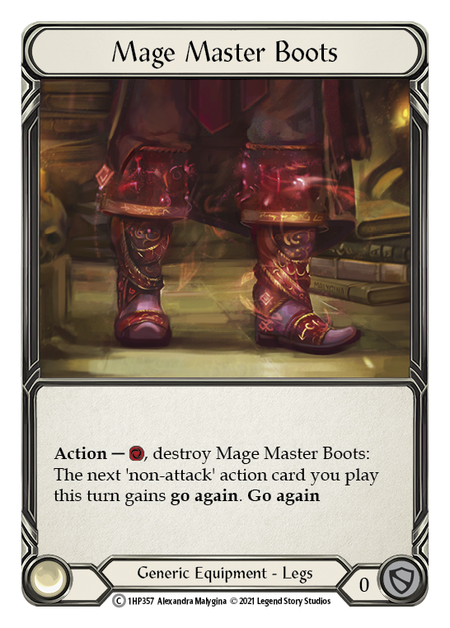
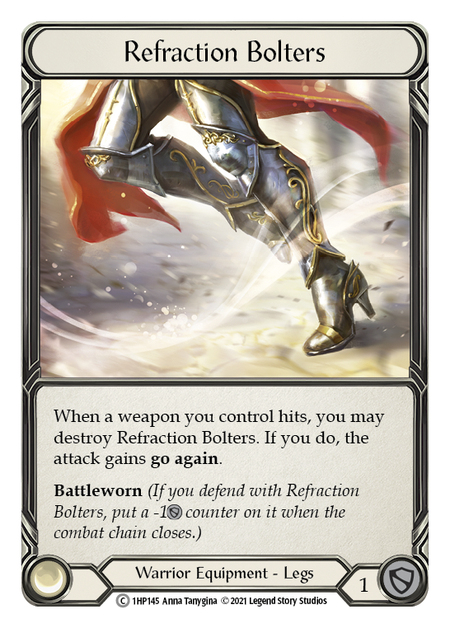
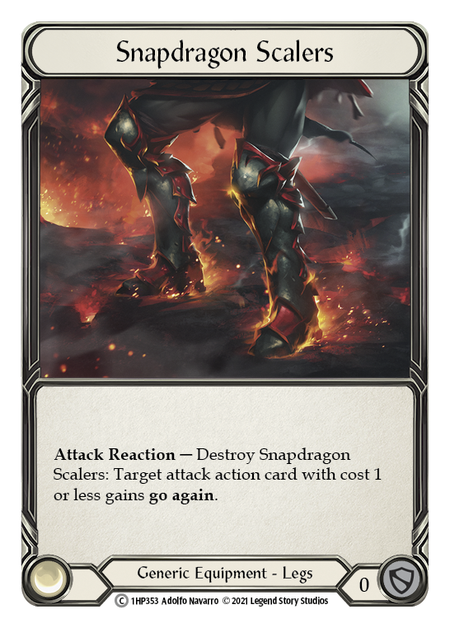
Snapdragon Scalers has the reputation it does for a reason. Being able to react and give any attack meeting its criteria go again is insanely powerful way to extend your turns in the more attack action-heavy builds. For those big Emperors who rely on the more arcane heavy tactics of dishing out pain, Mage Master Boots offer a good alternative way to stitch a few spells together. The Warrior class also has access to one of the best common boots in the game with Refraction Bolters. Offering an additional block and the ability to give your weapon swing go again, if it has hit, is so powerful it sees play in highly competitive Dori lists across all formats.
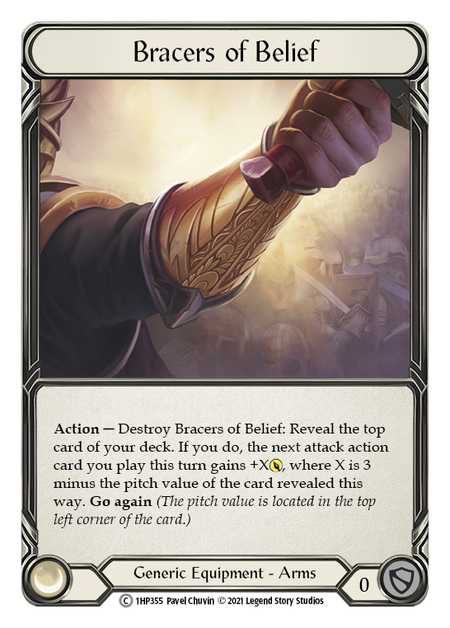

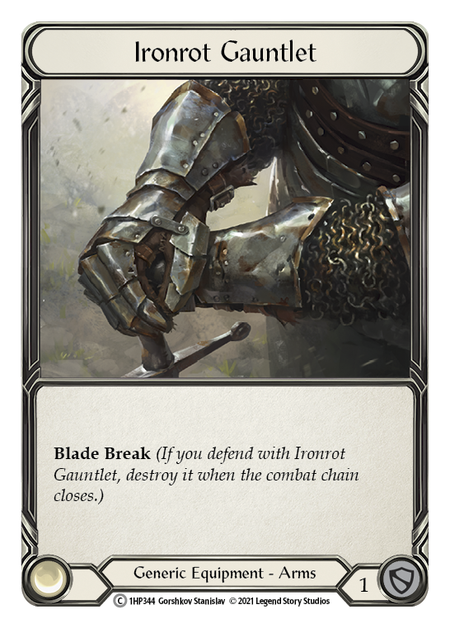
A heavy defense is synonymous with the warrior class, and Braveforge Bracers offer an additional 3 block for the Emperor, with an added bonus of being able to buff your next weapon swing by 1 if the last one hit. In the more weapon-centric build this is incredibly strong. But I offer a few alternatives for the arm slot. For some added power, Bracers of Belief will always add an additional 2 power to any attack in the deck thanks to every card in the deck being red pitch. Gallantry Gold offers the more weapon-focused builds the best of both worlds. Offering 1 block with battle worn, it can be cracked to give your next weapon swing a +1 also. If it’s just generic life you need, the Ironrot suite can provide up to an additional 4 defense for free, depending on how much you equip.
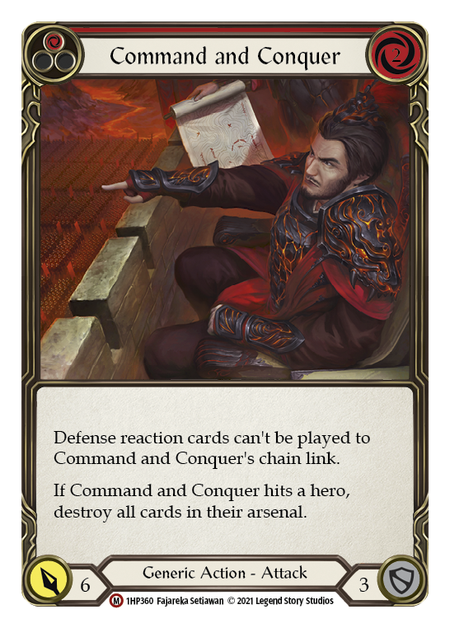
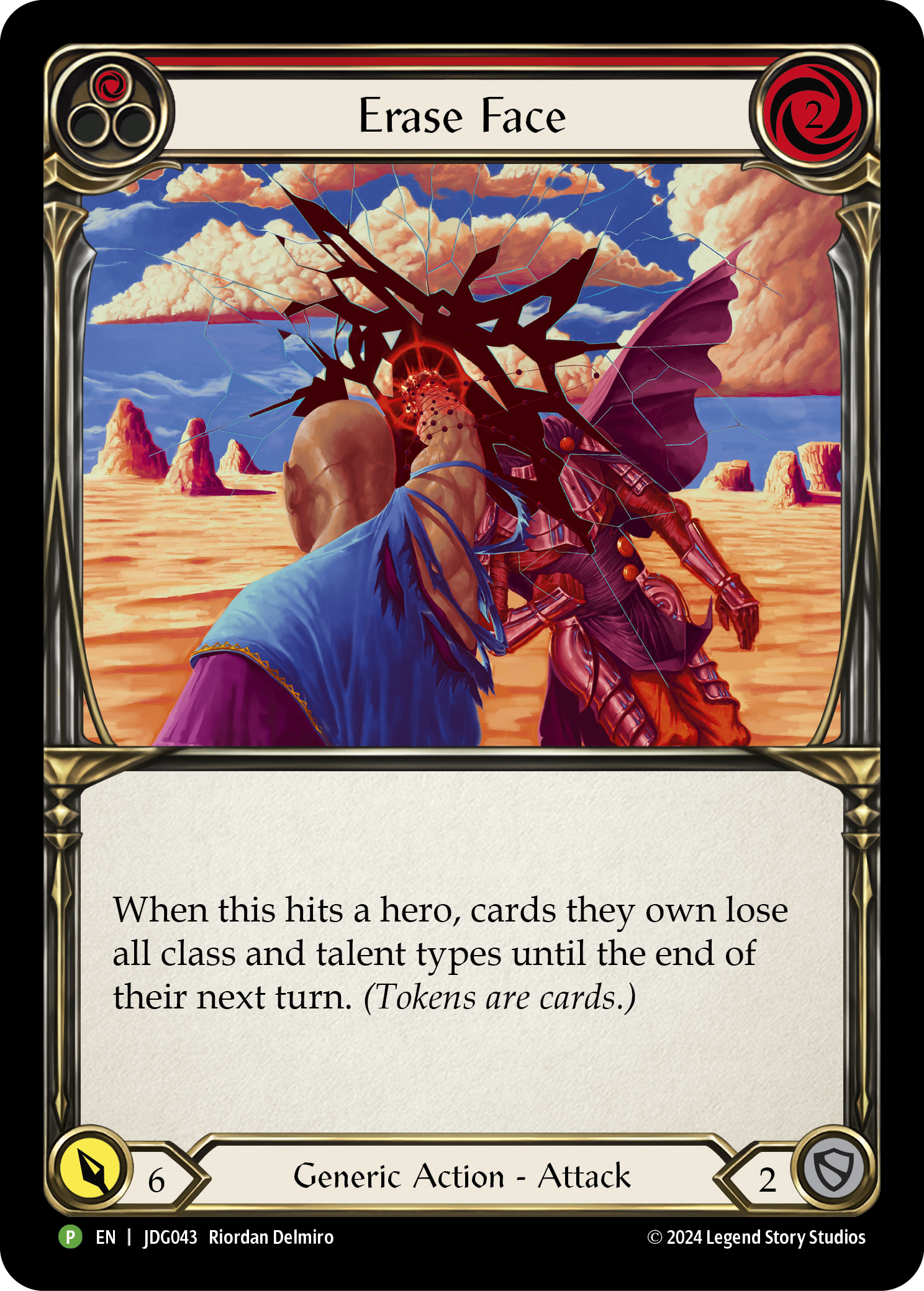
Command and Conquer commands the respect it does for a reason, but is it really necessary to play the Emperor? I don’t think so. At the cost of 3 resources, it can actually be a very inefficient way to spend your hand. 6 damage and the possibility of arsenal destruction is insanely strong, but at the cost of 3 additional cards from your hand, the math just doesn’t quite make sense all the time. I’ve seen a lot of competitive builds that completely opt out of C&C altogether, so do not think that it’s necessary to build and play Emperor at all! If 6 powered disruption is what you’re after, Erase Face can offer nice disruption.
Finale
The Emperor is a flavor-rich and complex hero, with multiple different archetypes and seemingly endless ways to build and pilot him, offering challenges to budget and serious competitive players alike. This makes him one of my favorite heroes in the game. He definitely reinvigorated my appreciation for Blitz.
One of the greatest things about Flesh and Blood deck building is the ability to express yourself in almost endless ways. Every hero in the game can be built in countless different styles, and as the card pool expands set to set, those possibilities broaden. Emperor embodies that ethos perfectly with his numerous different styles of play, restrictions, challenges and archetypes to build off of. If you’re looking for a fun, fresh new hero to challenge the way you build and look at decks in FaB, I hope this outline today has inspired you to look no further than Emperor.
Long live the king!
Uh… wait… damn.
